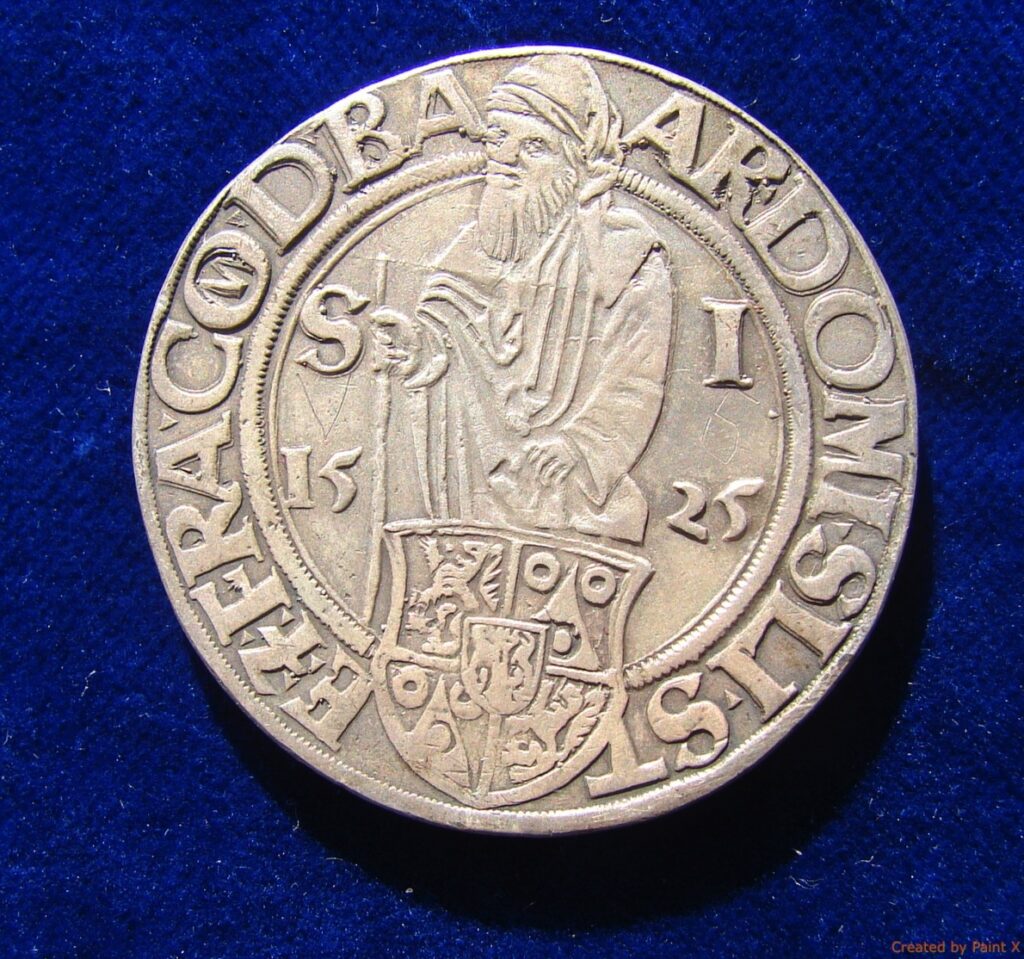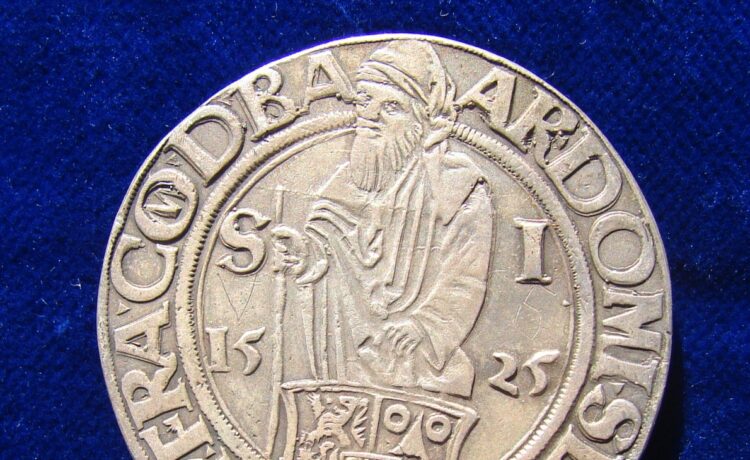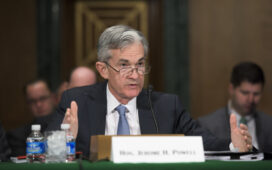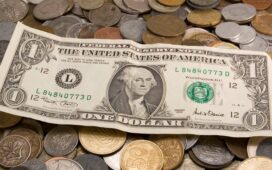by Ruth Orr
BOHEMIA — Gather ‘round, boys and girls, for a tale of etymology most convoluted and confusing. Well, hopefully not too confusing, since by the end of this column I’m hoping it all makes sense. Today, we dive into the how and why we call the dollar, well, the dollar. What does the word even really mean?

Our story starts not, as many of you might think, with the US of A. While the American Dollar may be one of the most well-known currencies in the world due to our global prominence, we’re not even the only ones who use the word ‘dollar’ to describe our money. And we certainly weren’t the first ones.
No, my friends, to find the origins of the word we must first turn our gazes east, into Bohemia. Historically, Bohemia was its own kingdom, surrounded by mountains with hot summers, icy winters, and a whole bunch of rain. It was run and ruled by Slavic Czechs who’d chased out the original Celtic Boii people in the 5th or 6th century, though they kept the name as a reference to the earlier Celts. The Slavs ruled themselves for a while, and they found Jesus in the 9th and 10th centuries, eventually falling under the sway of the Holy Roman Empire before being subsumed into the Austrian Empire under the Hapsburgs. There was a whole lot of Eastern European infighting and a few world wars, and today it now forms up a fair chunk of the Czech Republic. None of that is relevant to the dollar thing, but you should know where we’re talking about anyway, because it’s fascinating.
Anyway, once upon a time in the 16th century, in the northwestern Bohemian town of Jáchymov, there lived a bunch of people who didn’t call it that. Instead, they used the German name, Sankt Joachimsthal, translating roughly to ‘Saint Joachim’s valley’. ‘Sankt’ being ‘Saint’, Joachim being what it is, and ‘thal’ meaning ‘valley’. It was a mining town, with rich veins of silver running through the mountains nearby. In the early 16th century, a man with the frankly ridiculous title of the Count of Schlick looked at all the really nice silver ore moving through town and decided what they really needed to do was open up a minting facility to make coins. The Schlicks were the main dudes in the area, having founded the city in 1516 themselves.
Adhering to the German stereotype for precision even then, the coins that started pouring out of Sankt Joachimsthal were of a notably uniform weight and fineness. You knew exactly what you were getting, every time, and nobody was shaving anything off or mixing anything in to try to cheat you.
At the time, that was something traders had to really worry about– if you got five silver pieces for your item in one place, it may end up being nowhere near as much silver as if you’d gotten five silver pieces the next valley over. Everyone was making it up as they went along, and so the traders were desperate for something, anything, that they could use as a universal standard of measurement.
Enter: the joachimstalers, which soon became a widespread international standard across much of Europe. It should be noted that poor Count Schlick tried to market them as schlickenthalers, but that never caught on.
It was a funny word to be in reference to a coin, because again, ‘thal’ just means ‘valley’, so ‘thalers’ is valleys, plural. One coin was one joachimstal, two or more were joachimstalers. (Try not to think too hard about the ‘h’ that is dropping in and out of ‘thal’, German grammar rules don’t match ours and it was also the 16th century when nobody knew how to spell anyway.) It would be like if I started my own line of coins and you all just had to call them Walsenburgs, and everyone across the known world who used them had to call them that. Heck, for a real-life look at how you can call currency literally whatever you like, think about that whole crypto-bitcoin-dogecoin nonsense. Just don’t ask me about it, because I don’t understand it for love or money.
At any rate, it didn’t take long for everyone else to realize saying joachimstalers was an awful lot of work when really, nobody cared about Joachim, so they dropped it to just ‘taler’. From there, regional pronunciation and the inability to spell changed the ‘t’ to a ‘d’, and by the middle of the 16th century, the English language had added ‘daler’ to its lexicological legion, though here it was in reference to European coins in general, not necessarily those originating from Sankt Joachimsthal.
One of the most important places the word ‘daler’ caught on was Spain, where it became the dólar. Spain kept up the tradition of precision minting, making their silver coins (you may know them as pieces of eight, those things that pirates are always after in the movies) with extremely uniform weights and characteristics. If the joachimstaler was the standard throughout Eastern and Central Europe, the Spanish dólar/dollar became the first international standard of currency. It was so trusted that some countries just took whatever Spanish dollars they had in their possession, stamped their own logos on top of them, and used them as their own national currency. You can’t really get away with that these days, more’s the pity.
Now you may know that Spain was a fairly big player on the global stage, going out a’ conquisting on a regular basis and bringing huge chunks of the world under their sway. All those places got to experience the silvery glory and stability of the dollar firsthand, cementing it as the default for what currency could and should be in order to ensure everything is equal and fair.
Skip forward with me now to the 1780s, when the newly fledged US of A was looking for something to call their money now that they’d sent dear ol’ England away home again. Certainly they couldn’t continue to use pounds sterling, those were directly associated with the monarchy they’d just fought a whole war over. No, something else entirely was needed. Something that would denote stability and trustworthiness. Something that they could build into a standard, accepted by many people from different backgrounds, since each of the states had its own identity. Do you see where I’m going with this?
They argued about it for a while first, because of course they did, but eventually there was really only one option. The Spanish dollar was the model currency, and so the American dollar was formally adopted as their new currency standard in 1792. It did take another few years for them to actually manage to print their new dollars, but you know, they were a bit busy building a whole nation, so they get a pass.
At any rate, it wasn’t just the name of the currency our founding fathers nicked– they literally based the value of the US dollar on what the Spanish dollar was worth. Alexander Hamilton did some weird math to figure it all out based on how much silver was in a Spanish dollar, so they could all match up.
The dollar symbol that we all know and love, $, is also old, having first shown up in business correspondence in the 1770s from Spanish America in reference to the peso. At the time however, there were two vertical strokes through the symbol, not the one that my keyboard insists on using despite my every attempt to add a second line. Both one and two bars are accepted, though the more modern take by far is with only the one line, probably because it’s cleaner and easier, if significantly less cool.
There are alternate ideas on where the symbol came from, with some arguing it was actually an American invention stacking a U and an S on top of each other with the bottom of the U blending into the bottom curve of the S, but I don’t like that one, especially as other countries use the same symbol. The most commonly accepted hypothesis is that it was an abbreviation for ‘ps’ meaning pesos and people just had bad handwriting, putting the ‘s’ on top of the ‘p’. My favorite idea however is that it is derived from the Pillars of Hercules (which mark the entrance to the Mediterranean Sea) with a ribbon wrapped around the pillars to form the S. That symbol is a support element on the Spanish coat of arms, and was featured on many of the Spanish dollars that were circulating at the time. Mythology for the win.
Today, there are more than 25 countries that use their own version of the dollar. Our own dollar is the oldest of the bunch, since the Spanish dollar was discontinued in 1857.





